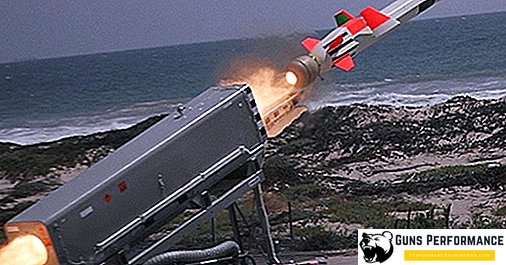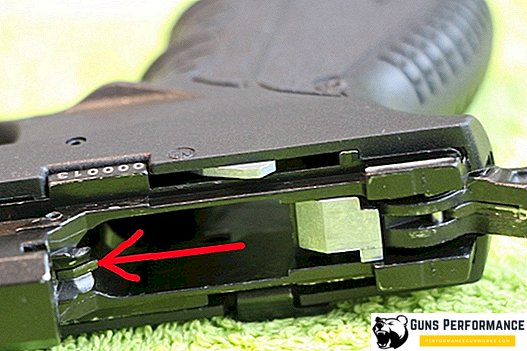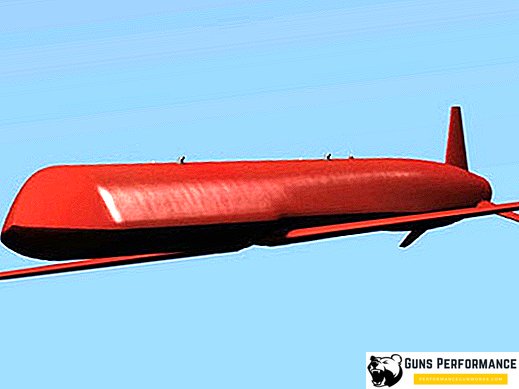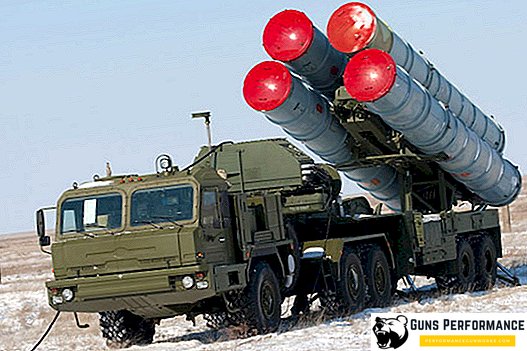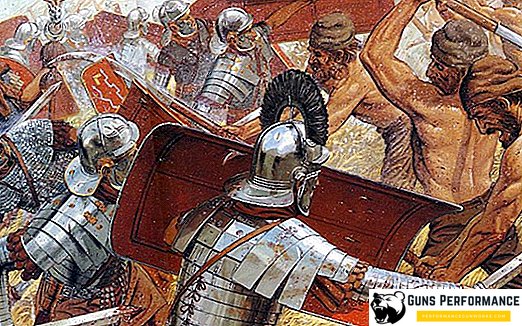The SS-26 Iskander is a missile operational-tactical complex designed to destroy area and small-sized targets in the depth of the operational position of the enemy troops with combat units used in ordinary equipment. The Iskander tactical missile system was created under the current 1987 short-range and medium-range missile treaty, as well as the non-use of nuclear weapons in hostilities by opposing parties. In connection with this, the Iskander missile system was created with due account of the new requirements for the developed systems:
- the use of combat units only in the usual equipment;
- non-use of nuclear weapons;
- control of the rocket of the greater (on the whole part) trajectory of its flight;
- high shooting accuracy;
- the ability to install various warheads based on the type of targets being hit;
- a high degree of automation of combat work management and information exchange processes.
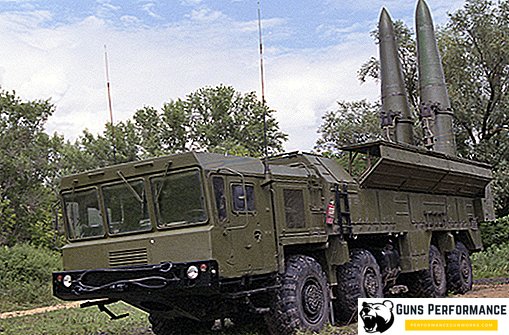
The number of "Iskander"
The tactical missile system "Iskander" began to be put into service with the ZVO in 2010, when the military received six such complexes as part of the state defense order. The state armament program until 2020 provides for the purchase of 120 Iskander complexes, which will be used by the ground forces. In 2018, the Russian army will have seven brigades that will be armed with Iskander-M missile systems, said Colonel-General Oleg Salyukov, commander-in-chief of the Land Forces of Russia. In 2018, two sets of the complex will be delivered for missile formations of the Eastern and Southern military districts.
History of creation
The Iskander missile system was developed by several design bureaus and institutes at once, but the main enterprise was the Kolomna Federal State Unitary Enterprise Design Bureau Mashinostroeniya, which was famous for its many legendary means of attack and defense — the Tochka-U missile systems, the Igla anti-aircraft missile systems (means of active protection). Also here it was designed most of the Russian and Soviet mortars of all types.
The Iskander missile system began to be developed by Sergei Pavlovich the Unbeatable, the legendary general designer, who took the extremely successful Oka missile system as a basis. According to some information, the Oka complex was the first in the history of the complex, which could overcome the missile defense system with a probability close to one and ensure the highest probability of hitting the enemy. However, these magnificent complexes under the 1987 treaty between the United States and the USSR were destroyed. The development of the new complex was continued by the student of the Invincible Valery Kashin, the current general designer and head of the Machine-Building Design Bureau. And the work was continued taking into account the fact that the final product fully fit into the framework of existing international treaties.
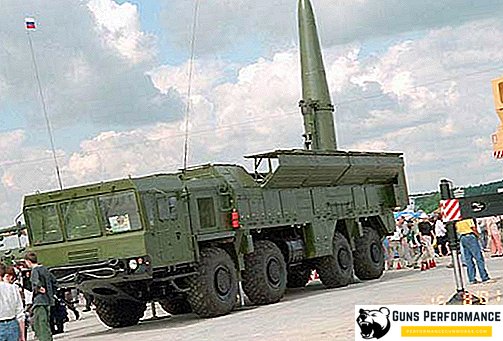
The task was set before the KBM: the Iskander complex must destroy both mobile and stationary targets. At the same time, the requirement remained to ensure the highest probability of overcoming the missile defense system and defeating the enemy. However, the new complex, in contrast to the "Oka", should not have a nuclear charge. The combat mission was to be solved at the expense of the highest accuracy. Overcoming the missile defense system was based on several solutions:
- Maximum reduced surface scattering rocket. For this purpose, its contour was made as smooth as possible, without sharp edges and protrusions.
- To prevent the rocket from being detected by locators, the outer surface was treated with a special coating that absorbs radio waves.
- But the main thing - Iskander was endowed with the ability to quickly and actively maneuver, and also made the trajectory unpredictable. It is practically impossible to calculate the anticipated meeting point in this case, therefore, it is also impossible to intercept the missile.
No other built operational-tactical and tactical missile in the world has such properties. In the course of the work, the designers performed a completely unique work, she forced to revise a lot of things that were laid in the draft design.
In February 1993, a Presidential Decree was issued on the implementation of development work on the product "Iskander M complex". It was issued by TTZ, which indicated a new approach to the construction of the complex, as well as optimized all solutions. As a result, the Iskander M complex has become a new product, not an upgrade of the old one. The complex "Iskander M" has absorbed numerous advanced achievements of national and world science. Climate, flight and bench tests stretched for several years, they were held at the Kapustin Yar test site, as well as in other parts of the country.
In October 2011, the first stage of testing of the Iskander-M missile system, which received new combat equipment, was completed. The 9M723 complex missile had excellent characteristics, as well as a new, correlation guidance system.
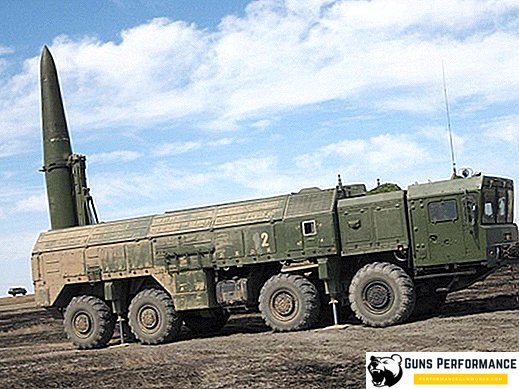
Tactical and technical characteristics of the complex "Iskander"
The complex "Iskander" has the following mph:
- The minimum firing range is 50 km.
- Maximum shooting range:
- the Iskander-E complex is 280 km;
- the Iskander-K complex is 500 km;
- of the Iskander-K complex with the R-500 cruise missile is 2000 km.
- The launch weight of the rocket is 480 kg.
- The mass of the launcher with missiles is 42,300 kg.
- Type of warhead: penetrating, high-explosive, cluster.
- Rocket engine: solid propellant rocket motor.
- Type of control system: inertial, autonomous, complexed with optical seeker.
- Chassis type: off-road, wheel.
- Number of missiles:
- on the transport-charging machine placed 2 missiles;
- On the launcher placed 2 missiles.
- Combat calculation launcher self-propelled unit is 3 people.
- The temperature range of rocket use, ranging from -50 to +50 degrees.
- The lifetime is 10 years, 3 of them in the field.
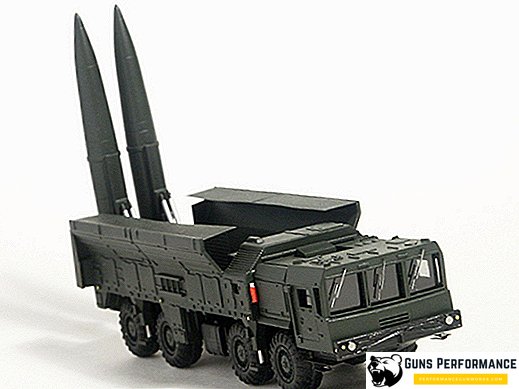
Rocket
The 9M723K1 missile of the Iskander complex has one stage operating on a solid-fuel engine. The trajectory of movement is quasi-ballistic (maneuvering, not ballistic), the rocket is controlled using gas-dynamic and aerodynamic rudders throughout the entire flight distance. 9M723K1 has excellent characteristics, it is made using technologies to reduce radar visibility (using "stealth technology"): special coatings, small dispersion surface, small size of protruding parts.
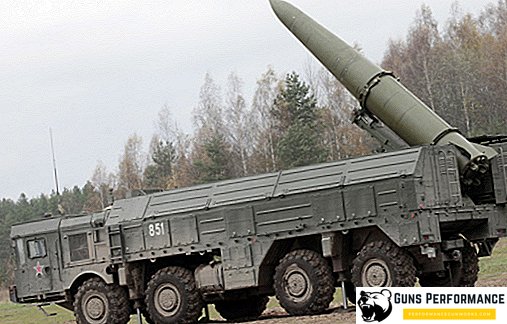
The main part of the flight is carried out at an altitude of about 50 km. The rocket performs intensive maneuvering with overloads of approximately 20-30 units at the initial and final segments of the flight. A mixed guidance system is used: inertial at the initial and middle sections, and optical at the end (using the GOS developed by TsNIIAG), which ensures high accuracy of hitting and hitting the target at a distance of 5-7 m. GPS / GLONASS is possible in addition to the existing inertial guidance system. In the Russian Armed Forces, from 2013, missiles must be supplied that are equipped with an EW system, this allows the missile to be protected from air defense in the final segment. This system includes means of setting active and passive interference from firing and surveillance radars for antimissile and antiaircraft defense, through the ejection of false targets and noise.
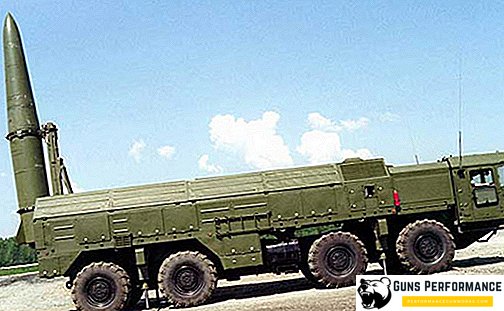
Design features
- The Iskander complex was created with the use of modern design and scientific and technical achievements in the field of creating operational-tactical missile systems. "Iskander" in terms of the amount of implemented technical solutions, as well as high combat effectiveness, is today a precision weapon of the newest generation. Its tactical and technical characteristics exceed the existing domestic complexes "Tochka-U", "Scud-B", including foreign analogues Pluton, ATACMS, Lance and others.
- "Iskander" with different control systems and intelligence. He can receive information from the satellite about the intended target for the defeat, the unmanned aerial vehicle or the reconnaissance aircraft to the information preparation point. At the TIP, the flight task is calculated for the missiles, and the preparation of reference information is also performed. This information is transmitted via radio channels to the command and staff vehicles of the battery and the division, and from there to the launchers. Commands can be received from the KSHM or the control points of the artillery commanders.
- The most important feature of the installation was the use of two missiles. One minute after the first start, the second one can start. The launcher was designed at the Volgograd TsKB Titan; in addition to the missiles, it also carries a full set of equipment for preparation and launch.
- The command and control vehicle was created to provide automated control of the Iskander complex. It is located on the wheeled chassis of the KAMAZ family of vehicles and is unified for each control link. The use of CMV in the control link of the start-up battery, the rocket division, the rocket brigade is ensured thanks to the programs, as well as their appropriate configuration during operation. The exchange of information between different elements of the complex can be carried out in closed and open modes. The maximum range of radio communication on the march (parked) is 50 (350) km, the transfer time of commands is up to 15 s, the calculation time of the task is up to 10 s.


